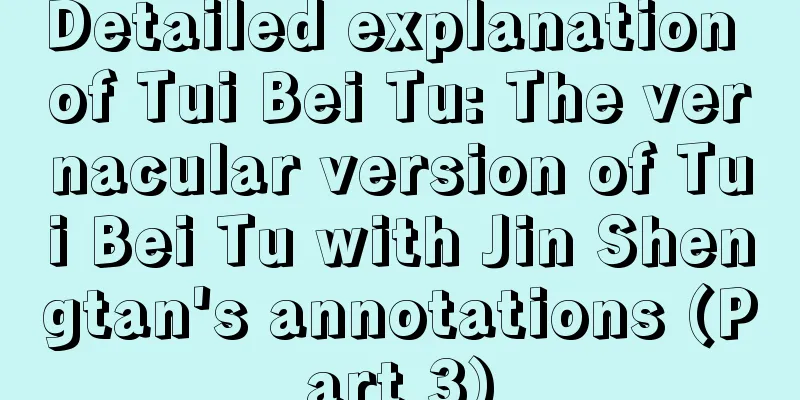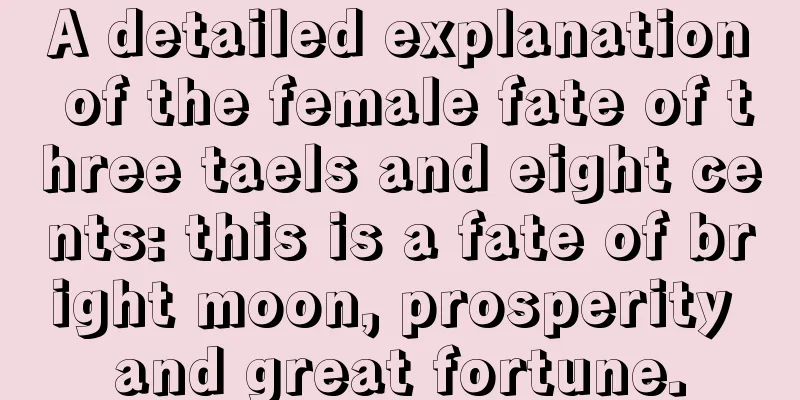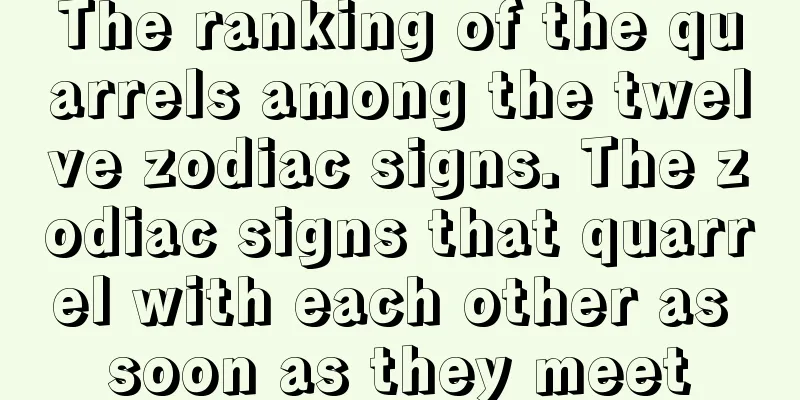Detailed explanation of Tui Bei Tu: The vernacular version of Tui Bei Tu with Jin Shengtan's annotations (Part 3)

|
The Tui Bei Tu originated during the reign of Emperor Taizong of the Tang Dynasty in my country and is renowned for the accuracy of its predictions. Starting from the destiny of the Tang Dynasty (the 2nd image), it has been predicted all the way to the world peace (the 59th image), and each image is connected without any disorder in the order. Next, please read the vernacular version of Tui Bei Tu with annotations by Jin Shengtan (Part 3), for detailed explanations of the thirteenth to eighteenth images. Detailed explanation of Tui Bei Tu: The vernacular version of Tui Bei Tu with Jin Shengtan's annotations (Part 3) The thirteenth symbol is Bingzi (Later Han Dynasty fell and Later Zhou Dynasty came to power) Prophecy The 14th symbol Ding Chou (the end of the Five Dynasties, the founding of the Northern Song Dynasty) Prophecy |
<<: Shop location Feng Shui shop location selection should follow eight principles
>>: 520 love letter to boyfriend 2017 520 most touching love letter recommendation
Recommend
The best boyfriends of the twelve zodiac signs
Girls all want to find their ideal husband. What ...
The star man who refuses to be a "henpecked husband"
"Henpecked" is a term often heard nowad...
Can we move after the Great Cold? The weather is not stable during the Great Cold.
Can we move house after the Great Cold? The Great...
August 23, 2018 lunar calendar
Is August 23, 2018 an auspicious day? Is it okay ...
A perfect name for a girl with the surname Gong
A name is a birth gift given to us by our parents...
Girls' names ending with Ming
Nowadays, many parents have realized that giving ...
Naonao Witch Shop Daily Horoscope 2017.11.06
The daily horoscope of Naonao Witch Shop 2017.11....
Baby girl names with the character "Qiu"
A name is a birth gift given to us by our parents...
How terrible is Sagittarius after turning evil? Which zodiac sign is it against?
Sagittarius is one of the twelve constellations. ...
Susan Miller's Weekly Horoscope 2017.9.25-10.1
Pluto will resume its direct motion on September ...
Three lucky charms to carry with you to drive away bad luck
When it comes to mascots, many people are just fo...
Collection of fun tests: What kind of black hole is there in your heart?
Deep in everyone's heart, there is always a p...
A sneak peek at the love luck of the twelve zodiac signs in April 2013
Spring is the season when flowers bloom. Ladies w...
What does it mean when the natal Buddha is broken?
What does it mean if the natal Buddha is broken? ...
The most heartwarming sentences and text messages for women's day
The annual International Women's Day is comin...









